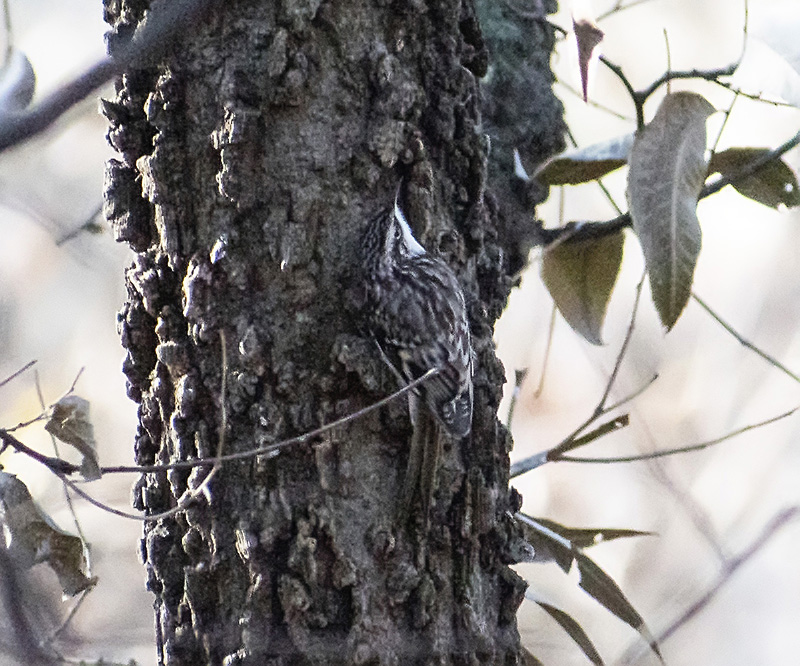
By Grace Huffman
Small and easily overlooked, Brown Creepers are one of winter’s treasures. Why are they so easily overlooked? Well, they are experts at camouflage. While they are white on their undersides, they look like tree bark on their backs, blending in almost perfectly to the trees they cling to. Even in flight they can be tricky, as it can appear that they are flying like falling leaves.
Brown Creepers are similar in size to nuthatches, and look under the bark of trees for insects like nuthatches too. But unlike nuthatches, creepers go up trees instead of down, and they are less likely to visit your birdfeeders, although they may come by to snack on suet or peanut butter. Creepers are incredibly efficient eaters, and on average bird burns anywhere from 4-10 calories a day. According to allaboutbirds.org, a spider provides enough fuel for a creeper to climb 200 feet!
Creepers spend their winters spread out across much of the United States, and spend their summers in southern Canada and parts of Alaska. There is also a large population that is nonmigratory, and they spend the entire year close to the west coast, Rockies, and the northeast/Great Lakes region. The female builds the nest, but the male will bring nesting material and sing nearby. Once the cup-shaped nest is built, the female lays 5-6 eggs inside and incubates them for around 2 weeks.
Because they are so tricky to see, I end up not seeing them very often. In fact, my first eBird record is from February of this year, when I saw one in the Wichita Mountains. I’d seen one many years before, but that was before I started tracking my records with eBird. Keep an ear out for their high pitched calls, similar to a Golden-crowned Kinglet but sharper.
Despite the fact that I don’t see them very often, Brown Creepers are listed as Least Concern. In fact, they are on the increase in population, which means we’ll get to enjoy these little birds for years to come.
I took this photo last month, when some friends and I were birding on the eastern side of the Stinchcomb Wildlife Refuge. If you haven’t been there, I highly recommend it, as Brown Creeper was on of nearly 50 species we recorded that morning.
